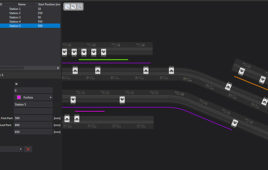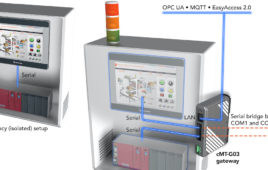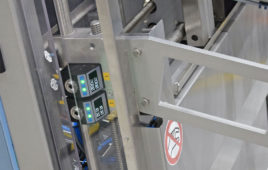
Image credit: Local Motors
Local Motors, the maker of a 3D printed car that it hopes to deliver to the mass market, has now put its first self-driving vehicle on display at the Local Motors Experience Lab in a Maryland shopping mall.
A four-wheeled, app-enabled electric minibus that can fit 12 passengers, the Olli navigates using Internet of Things technology provided by IBM Watson. It still needs some “fine tuning,” according to a report from Computer World, in order for the self-driving technology to truly be ready to be released into the wild.
The self-driving feature is expected to be ready in the fall. Passengers will be able to give verbal directions to the bus, which will drive on the private roads around the National Harbor mall complex. Two more of the vehicles have been ordered by Miami-Dade County for use as public transport in support of conventional transit like public busses. The Olli could be used as connections for low-traffic “last mile” routes such as from a subway or bus stop to an office building.
IBM is also planning to use Ollis to study how Watson and the IoT can be used in self-driving vehicles. Additional routes are planned near Phoenix and at IBM Watson’s IoT AutoLab.
The designer behind Olli is Edgar Sarmiento, a 24-year old Local Motors community member who works at a design agency in his home country of Colombia. Sarmiento submitted his design in Local Motors’ Urban Mobility Challenge, one of the design contests from which Local Motors crowd-sources some of its ideas. He was paid $28,000 for his design.
Included in his plan was an app with which users could hail the vehicle, make payments, or map alternate routes.
The production of the first Olli took two and one-half months including finding suppliers and 3D printing parts, according to an article on Olli from NPR. About 25 percent of the vehicle is made from 3D printed parts.
On the IBM website, Harriett Green, general manager of IBM Watson of Internet of Things, said, “What’s unique about Olli is that it leverages IBM Watson Internet of Things to analyze the massive volume of transportation and rider awareness data from more than 30 sensors embedded throughout the vehicle and provides the interface and platform for interaction between the passengers and Olli. Olli is able to have authentic conversation with riders about how the vehicle works, where they are going, and why Olli is making specific driving choices.”
Olli has not announced the cost of building the Olli nor the retail price of the vehicle, which is targeted to municipalities or fleets.
Ideally, vehicles that respond to voice commands and make intuitive self-driving decisions could be more than just busses that loop around a mall. The riders could ask Olli for directions or for recommendations for places to eat or things to do. It might even be able answer the eternal question: “Are we there yet?”
Filed Under: M2M (machine to machine)




